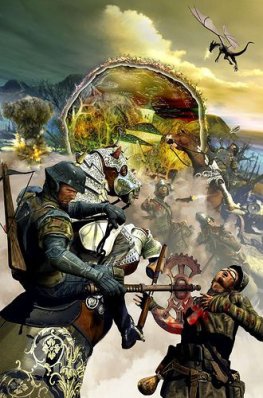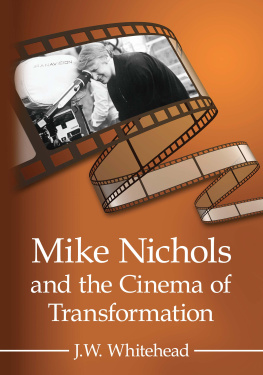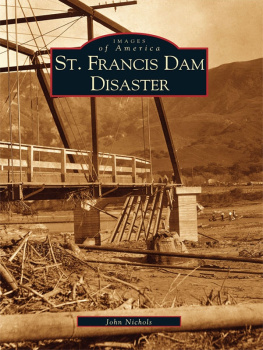Published by State University of New York Press, Albany
2018 State University of New York
All rights reserved
Printed in the United States of America
No part of this book may be used or reproduced in any manner whatsoever without written permission. No part of this book may be stored in a retrieval system or transmitted in any form or by any means including electronic, electrostatic, magnetic tape, mechanical, photocopying, recording, or otherwise without the prior permission in writing of the publisher.
Excelsior Editions is an imprint of State University of New York Press.
For information, contact State University of New York Press, Albany, NY
www.sunypress.edu
Library of Congress Cataloging-in-Publication Data
Names: Nichols, Michael, 1951 author.
Title: Hell Gate : a nexus of New York Citys east river / Michael Nichols.
Other titles: Hell Gate, a nexus of New York Citys east river
Description: Albany, NY : State University of New York Press, [2018] | Series: Excelsior editions | Includes bibliographical references.
Identifiers: LCCN 2017053073 | ISBN 9781438471402 (pbk. : alk. paper) | ISBN 9781438471419 (e-book)
Subjects: LCSH: New York (N.Y.)Description and travel. | Hell Gate (New York, N.Y.) | East River (N.Y.)
Classification: LCC F128.68.H43 N53 2018 | DDC 917.47/104dc23 LC record available at https://lccn.loc.gov/2017053073
10 9 8 7 6 5 4 3 2 1
To the fishermen, the mariners, and Tom Maxeythe isolatoes each his own continent;
and an honorable mention to Salvator R. Tarnmoor
A passage, called by the Dutch settlers of New York, Helle Gat
New International Encyclopedia
These are the true names of the placesbut why it has been thought necessary to name them all, is more than either you or I can understand. Do you hear anything? Do you see any change in the water?
Edgar Allan Poe, A Descent into the Maelstrom
Terror enlarges the object, as does joy.
William Carlos Williams, In the American Grain
INTRODUCTION
Views of Hell Gate
Panorama
Along the Manhattan side of the East River, just south of Hell Gate, is a long promenade built as a vent for the restless. Built above a short section of FDR Drive, its height allows the same command over water one might have from the deck of a ship: water below, sky above. The promenade is named John Finley Walk, after a local peripatetic who was at one time a professor at City College, later an editor of the New York Times , and author of an essay called Traveling Afoot, in which he had this to say: And the moral of my whole story is that walking is not only a joy in itself, but that it gives an intimacy with the sacred things and the primal things of earth that are not revealed to those who rush by on wheels. His lasting fame: the promenade itself John Finley Walk so easy off the tongue that some people think the mans last name is actually Walk. He was prominent in his day, a friend of Mayor LaGuardia, who upon Finleys death ordered flags at City Hall to be flown at half-mast. He died in 1940, as the promenades construction was finishing. How to memorialize him, what to do, what to say? So LaGuardia named the promenade after him, John Finley, the man who walked.
The walk fronts a small park, named for another favorite son, Carl Schurz, an idyll of thick summery vegetation and winding paths lined with wood benches. Together the park and the walk are a kind of breathing space for those New Yorkers confined to combustibly tight living quarterswhich means nearly all of us. The walk and the park are two adjoining rooms: the park is the great room shadowed by tall apartment houses, and the walk is the open deck, high above the water and facing the outdoors. The walk is the perimeter, the margin, and not only does the sky make an appearance here, it is dominant. Its openness is enough to suggest the illusion of escape, as though it were possible to leave the city by putting ones back to it. In warm weather, people are out here by the thousands, walking, parading, talking, enjoying themselvesall out to take in the long views of river and sky, the space and light, and there is plenty enough for all, as though each may have it all, and each may have it all to ones self.
Even in winter, a few hardy souls can be seen on the walk. One can imagine John Finley among them striding his great steps, he who thought nothing of circumambulating Manhattan Island in a day. But most of these walkers dont have Finleys stamina, and indeed some seem to have a hard time breaking city habits. Though they can walk on without confinement and without the distraction of traffic, they indulge in what might be called extended pacingthey walk the length of the promenade, turn back, and when they get back to their starting point, they repeat the cycle. On the Walk, a pacer comes by, again, walking fast. Bald pate, sharp eyes, long gray hair flapping at his nape, the wings of a gull. He is returning. This is his fourth trip by the bench where Im sitting, but whos counting? He came by a half hour ago and went on. Then he returned. Then he went on. He goes off and returns the river flows one way, then the other. He is mumbling something. I lean in to catch his wordsfolly or wisdom? His mumblings turn out to be the simplest of pleas: Leave me alone, show some respect Im not bothering you, am I?
Ishmael, in Moby Dick , asks of the water-gazers: What do they here?
Along the outer edge of the Walk runs an iron rail set into a massive but low embankment of aggregate concrete. The embankment is the perfect height on which to prop ones foot, and the rail is chest high, perfect for leaning into and over and losing yourself to the view beyondand constructed with such solidity that you can trust the engineering, and be confident the rail will not give way as you dream on. From the rail, you can view the entire sweep of Hell Gate and its environs: to the right, south, the part of the East River separating Manhattan from Roosevelt Island, the Gothic lattice of the Queensborough Bridge in the distance; in front, east, Roosevelt Island and Halletts Point, in Astoria, Queens, warehouses and low-slung apartment houses crowding the shoreline; northeast and north, the turn into Hell Gate channel, the Triborough and Hell Gate Arch Bridge that span the channel, the southern edge of Wards Island; and almost the whole of the wide Hell Gate basin west to Mill Rock.
From the rail, all things below are simple: currents flow in and out of Hell Gate, changing direction every six and a half hours or so. The flood current flows southwest to northeast. Later, it reverses: the ebb current starts up from the northeast and runs southwest. If there is no wind at slack tide, the water becomes smooth as slate. You can lean on the rail and watch all this as it happens, should you watch long enough.














